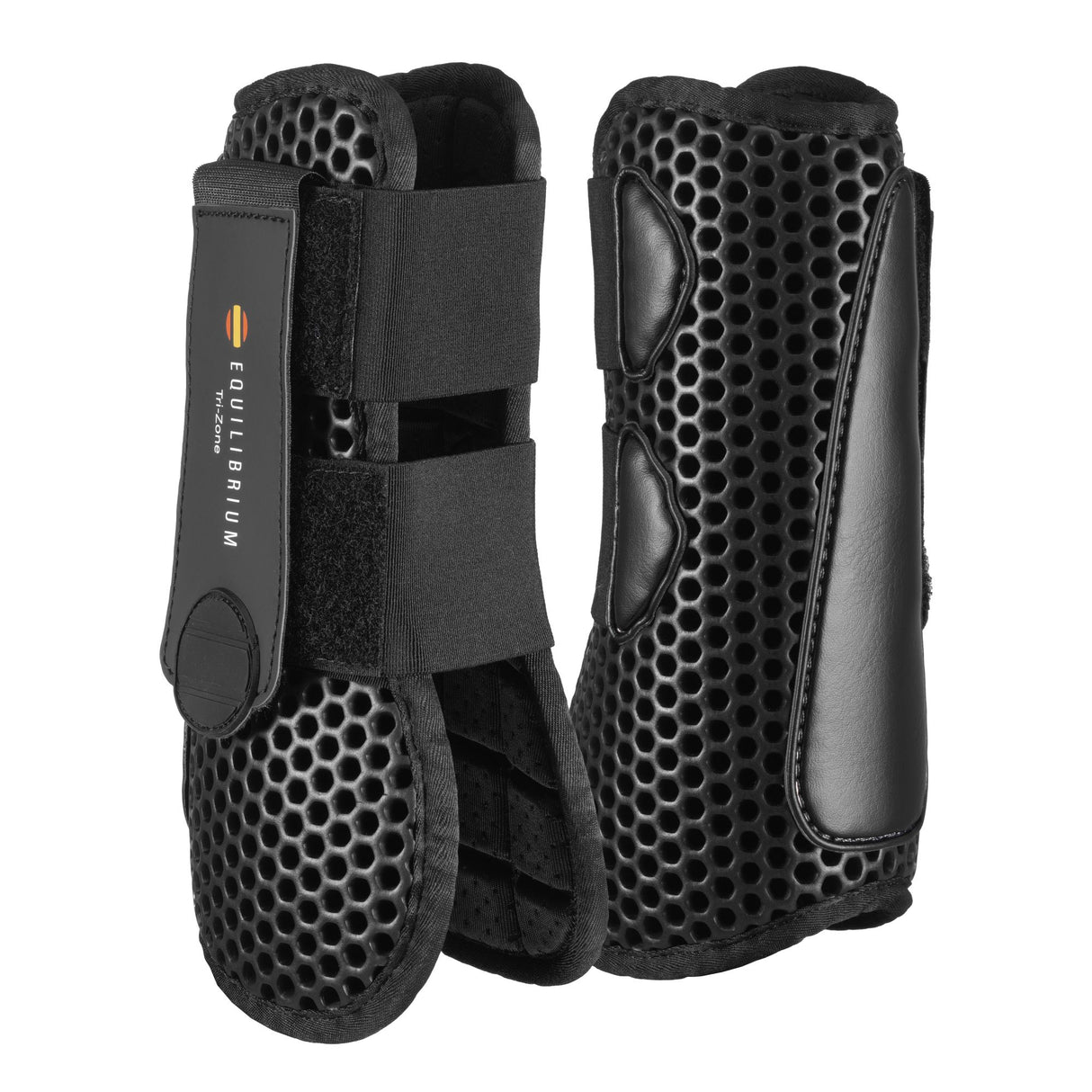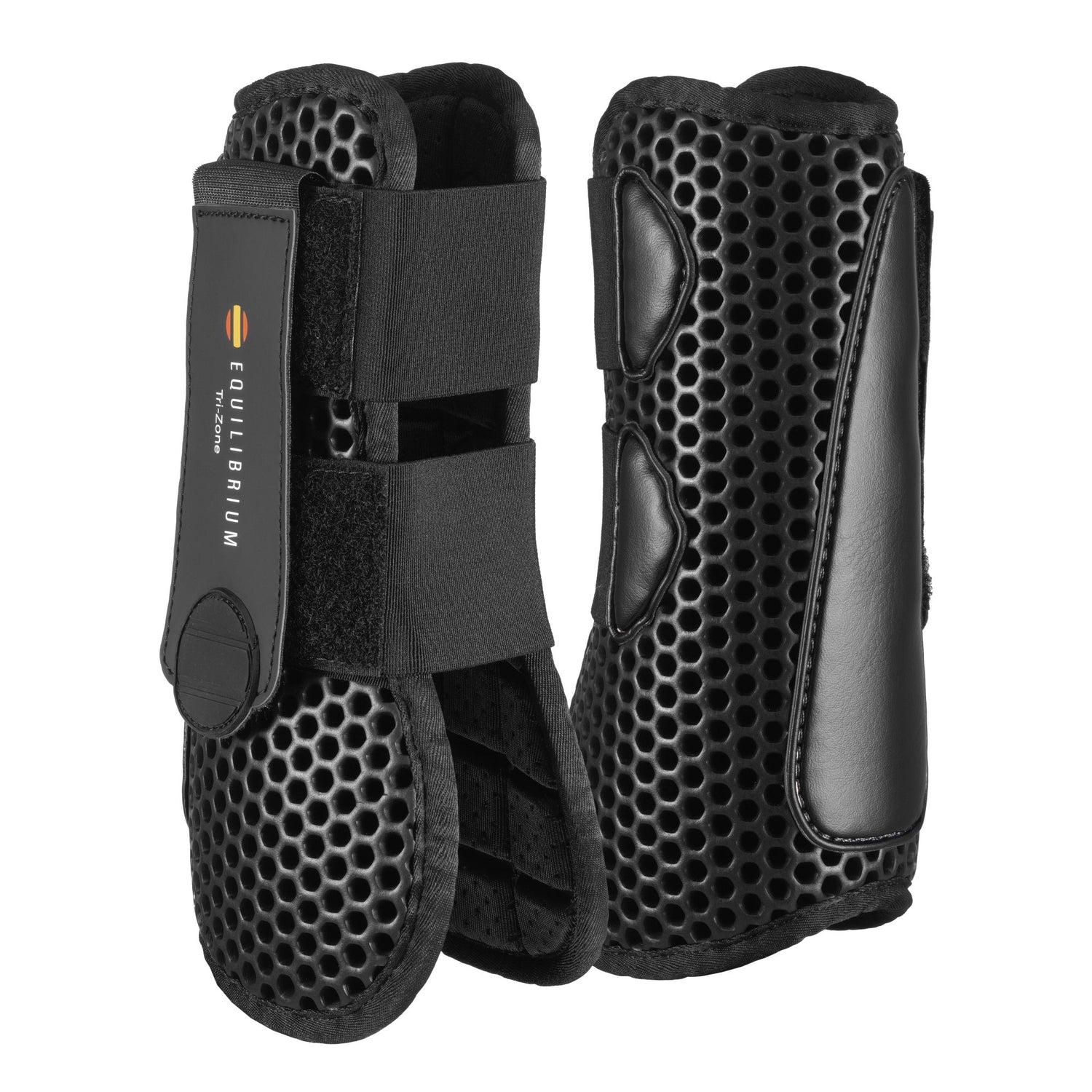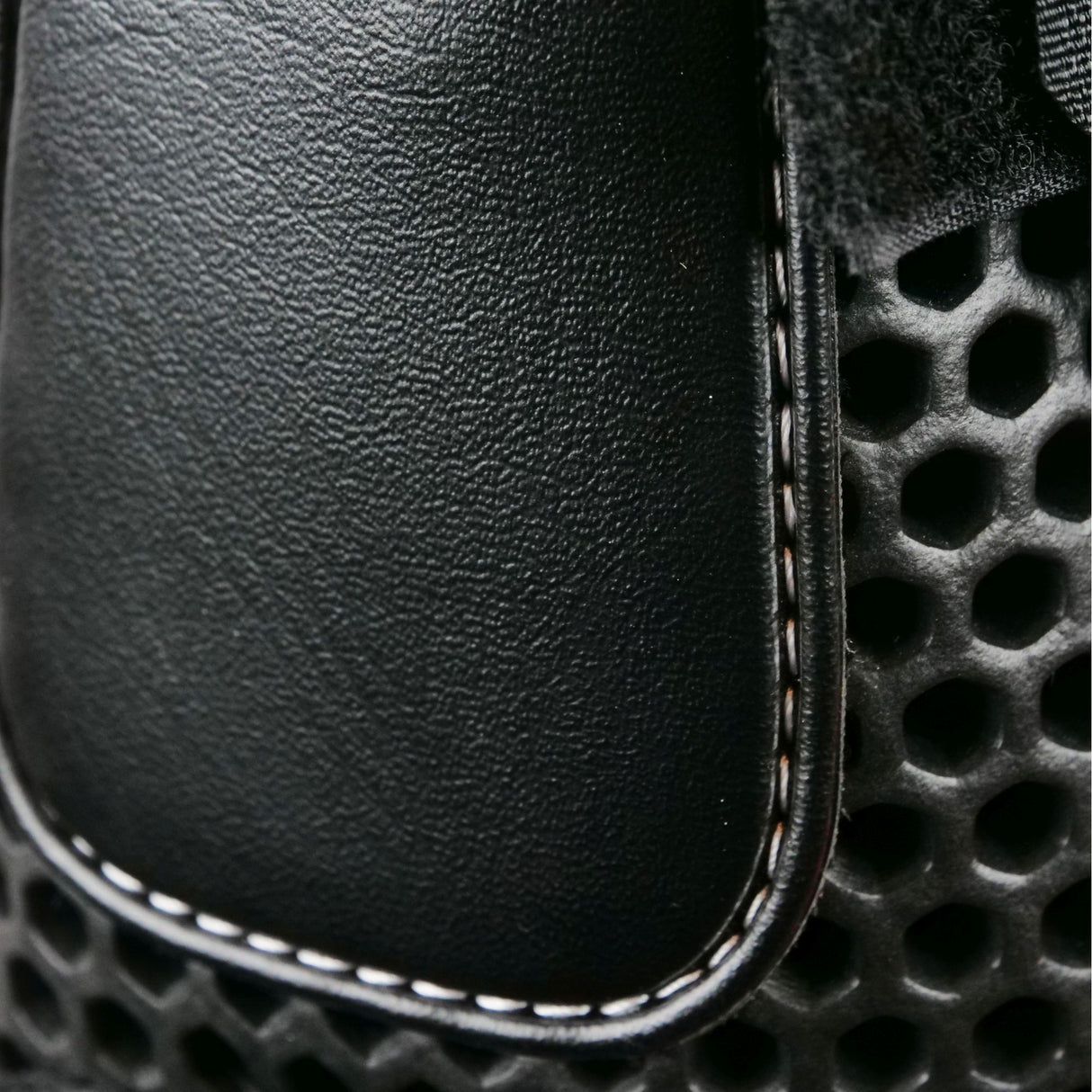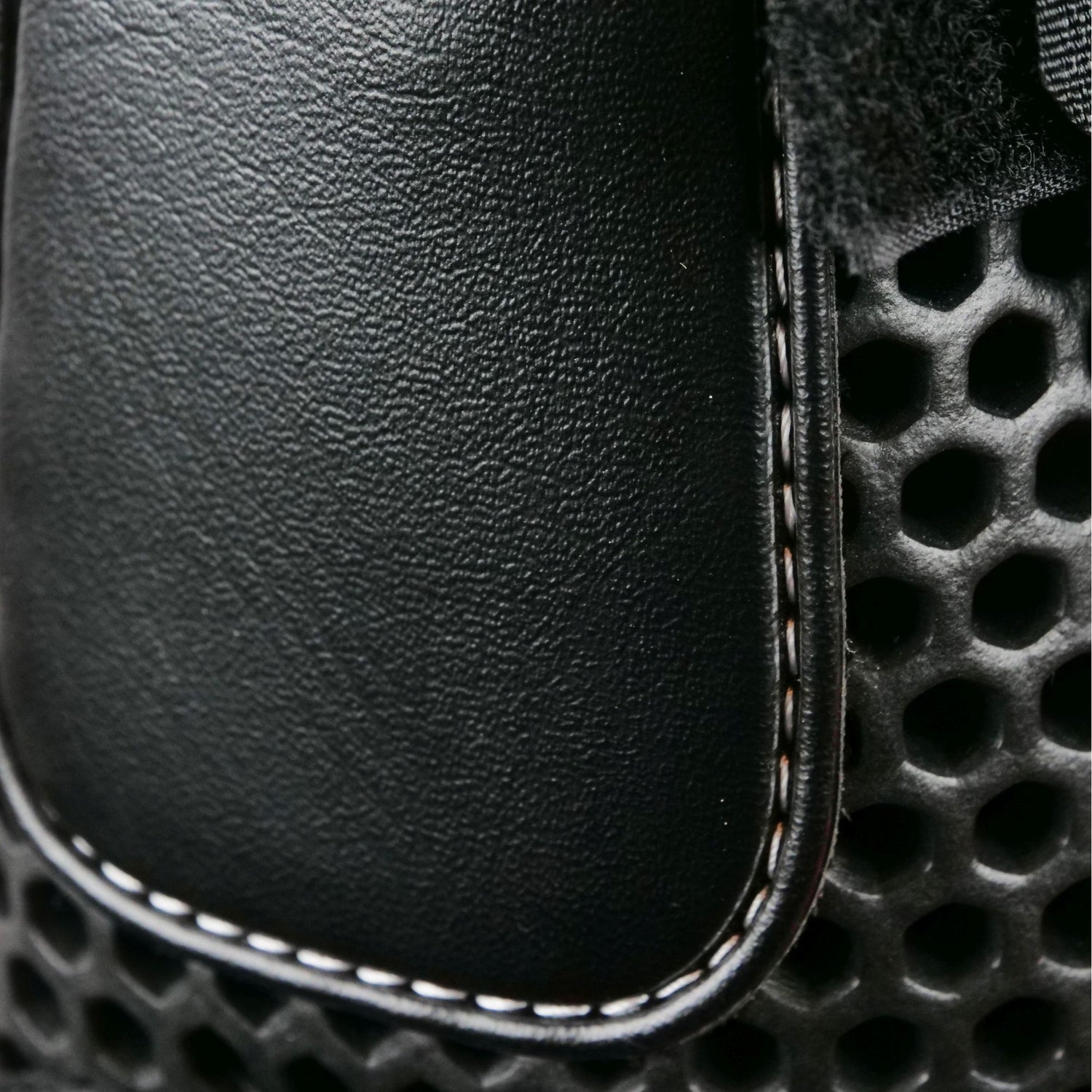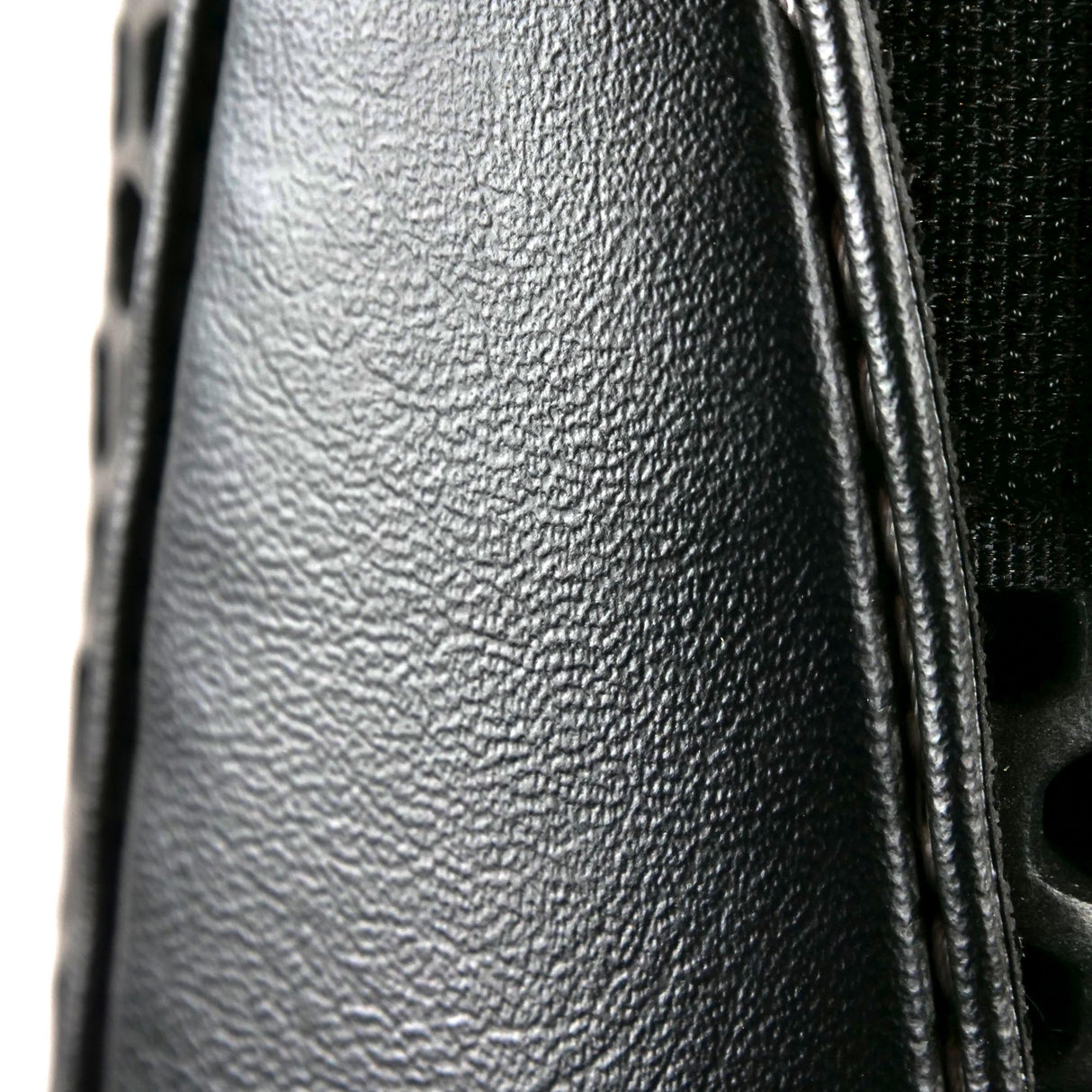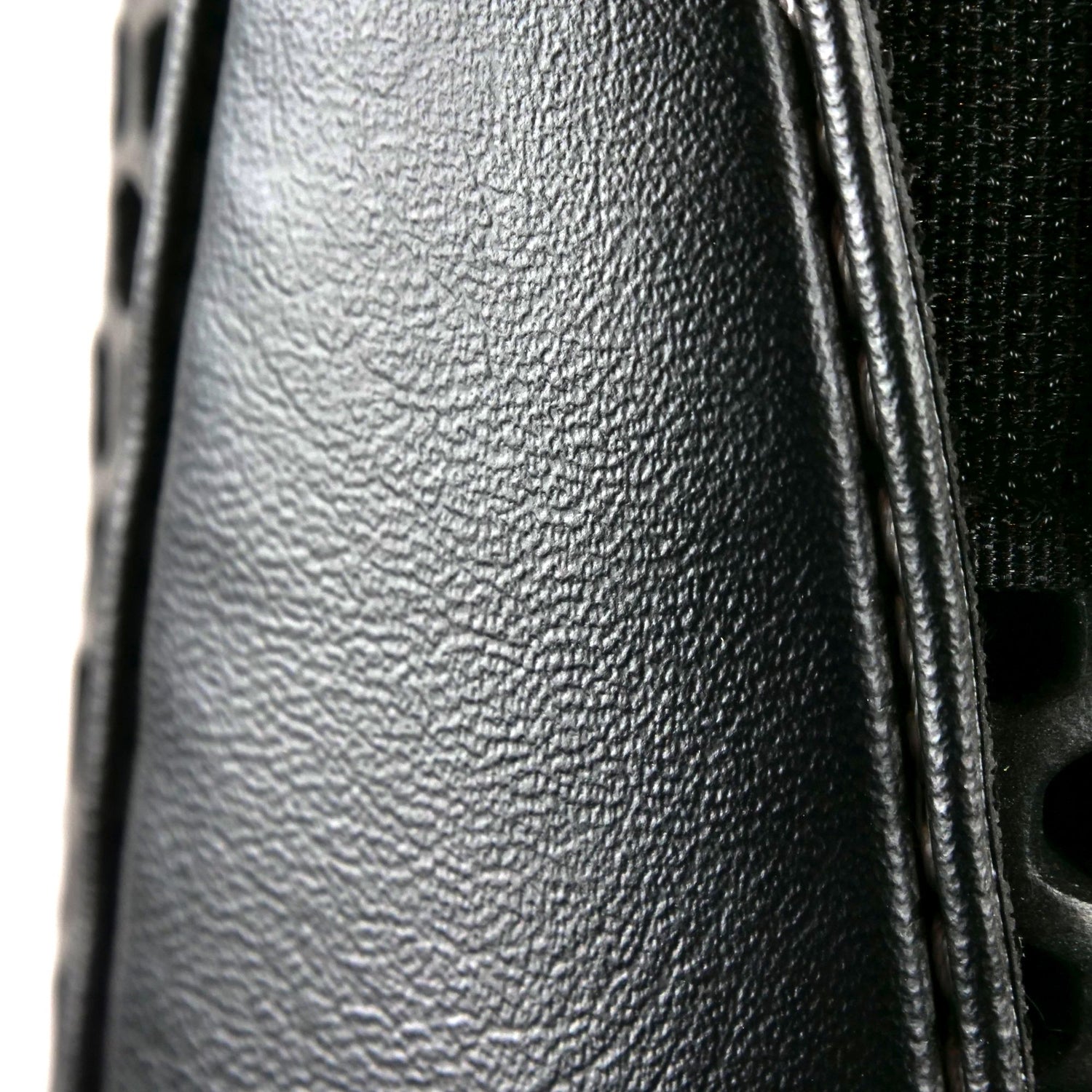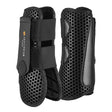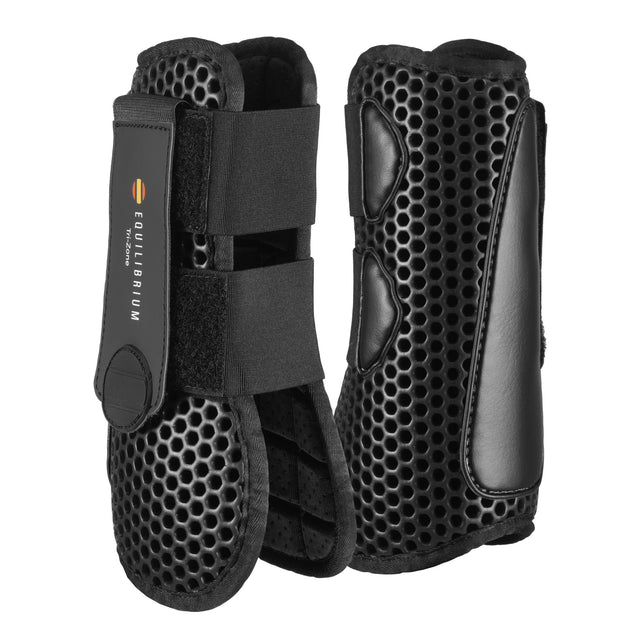Equilibrium Airlight Open Front Boots
Equilibrium Airlight Open Front Boots - Black / XS (Special Order Only) is backordered and will ship as soon as it is back in stock.
Couldn't load pickup availability
Product Collections:
Discipline: Eventing , Discipline: Hunter/Jumper , Equilibrium , Horse Boots , Leg Wraps & Boots , Products , Tri-Zone ,
Description
Description

The ultimate combination of style and protection in a comfortable, soft-shell open front tendon boot.
- Safety tested in an independent laboratory for protection, flexibility, breathability, and weight.
- Five-layer protection system
- Matches perfectly with the Tri-Zone Fetlock Boots
- One year product guarantee
- Sold in pairs
This horse tendon boot is the ultimate combination of style and protection. This soft-shell jumping boot is smart enough for competition but durable for every day.
Protection provided by the Tri-Zone Open Front Tendon Boots.
The boot design uses a five-layer system. The first layer provides an inner lining for the horse and sits softly against the leg. It is perforated and cushioned to ensure breathability and comfort.
Layer two is a strong mesh. This adds another layer of protection to the jumping boots but also stops any debris from making its way into the boot towards your horse's leg.
Layer three is the internal guard. This layer is placed over the vulnerable tendon area and is made with strips of material. This allows it to mold around the horse's leg, which allows the horse to move freely without the feeling of a ‘splint’.
The fourth and outer layer provides a durable, breathable, and attractive material. We’ve made sure this material is easy to clean and maintain too!
Lastly, the final layer provides extra protection to vulnerable areas.
Testing of the Tri-Zone Horse Jumping Boots.
Designed to meet the needs of the everyday rider to the top international competitor, these boots are tested by an independent safety testing laboratory. Here they get checked for their ability to protect against concussion and penetration injuries. The boot testing also includes breathability, flexibility, and weight testing. See the boot testing tab for more information.
Looking at the boots in more detail.
With little stylish additions, our Tri-Zone Open Front boots look great on their own or as a set with the coordinating Tri-Zone Fetlock boots.
Easy to care for, these horse tendon boots are machine washable and quick to dry. The elasticated straps allow them to fit a wide variety of horses too. The softshell design allows the boots to stay flexible yet protective.
Boots are safety equipment
As riders, we protect our most vital areas (head and torso) with riding helmets, body protectors, and more recently air jackets. Rider protective equipment is subjected to extensive testing to meet standards and regulations and we believe that as a vital piece of equipment for your horse, protective boots for your horse’s legs should undergo a similar testing process.
Tri-Zone boots go through a unique 3-phase testing process giving you confidence that you are choosing the best leg protection for your horse. Materials are carefully selected to provide maximum protection but without being bulky, heavy, and not make your horse's legs hot and sweaty. Each individual layer in the Tri-Zone boot is researched and sourced for its advanced technical properties and tested in an independent laboratory before it goes anywhere near a horse’s leg.
Testing Phase 1 – Independent Laboratory
In the same laboratory that tests standards of riding hats and body protectors, Tri-Zone boots are safety tested to their limits for their ability to withstand concussion and penetration whilst remaining lightweight, breathable and flexible.
Protection
For concussion and penetration, the testing is carried out using a custom-made test rig consisting of a tower from which either a blunt hammer or a cutting blade is dropped onto the boots in a controlled fashion. The weight of the blade and hammer is fixed and different forces are applied to the boots by varying the height from which they were dropped onto the boots. Boots were hit with forces ranging from 1.25 to 20 Joules. These forces were chosen as being those likely to occur in the horse during exercise, for example when hitting obstacles or over-reaching.
Heat & Breathability
We test our boots to measure how well the boots allow heat to escape in order to reduce the risk of tissue damage.
Research has shown that when tendon cells are heated to 48°C for 10 minutes approx, 80% of them die. We use several different methods to assess heat release from boots. The heat release is estimated by fitting the boots to a metal flask containing water at 45°C in a room at 20°C with no significant radiation. The surface temperature of the boots is measured using a thermal camera. We tested Tri-Zone boots, along with a number of other boots on the market.
From this, it was clear that some boots were very effective insulators and kept the heat in so the outside of the boot appeared cold. Other boots appeared much hotter on the surface, showing that they were allowing heat to escape.
Heat release was then estimated by measuring the rate at which the temperature of the water in the flask dropped whilst 20°C air was being blown over the boot (via a fan). This was done to simulate the movement of air over the boot and leg as would occur during exercise.
Flexibility
If boots are constructed of inflexible (i.e. stiff) material or if boots are applied too tightly, they have the potential to restrict joint movement and cause other problems such as tendonitis. Stride characteristics and performance could also be affected. Boots need to allow as much freedom of movement as possible without compromising on their primary function of protection. We test our boots to make sure that they do not restrict the horse’s movement whilst still exceeding protection requirements. An 8cm x 1m steel pipe is set up secured to a workbench. The boots are fixed to the pipe and a 10kg weight is attached with a clip on the boot and the downward direction measured. The degree of flexibility is measured by how much the boot bends.
Weight
Adding even small amounts of weight to the end of the leg in the form of a boot significantly increases the effort the horse must make to run and can also alter the stride characteristics. Some boots can double in weight if the horse is being exercised in the rain, on wet ground, or going through water. This can seriously affect stamina and performance. We design and test our boots to minimize water absorption, excess weight but without compromising on protection.
Testing Phase 2 – Tester Panel
The boots then undergo trials by an extensive tester panel of horse owners and riders who test them for fit, comfort, ease of use, and washing to ensure we have not only a safe product but one that people can easily use and trust.
Testing Phase 3 – Rider Tests
Finally, the boots go through the rigorous test of being used all day, every day on busy competition yards by teams of professional riders. Tri-Zone boots are worn either at home or at competitions by an array of Olympic riders, world champions, and top producers.

Payment & Security
Payment methods
Your payment information is processed securely. We do not store credit card details nor have access to your credit card information.

